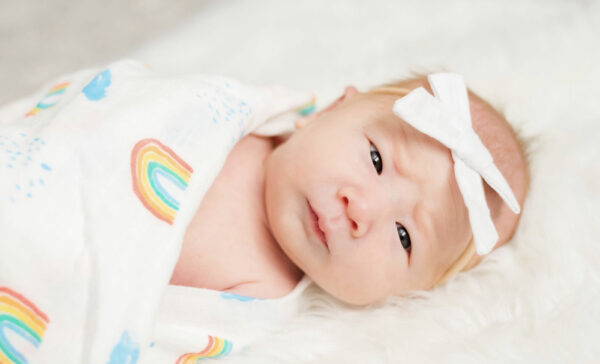Start the journey to motherhood with fertility testing for lesbians

Fertility Specialists of Texas offers several family-building options for lesbian patients. To help you decide which is best for you and your family, our team will order fertility testing for lesbians. Female fertility testing typically consists of tests to evaluate ovarian function and view the uterine cavity. Our LGBT fertility clinic team will then use your test results to create your customized treatment plan so that you can bring home a healthy baby.
Several female fertility tests can provide vital information about ovarian function
To have a baby using your own eggs, you need to have a good supply of healthy eggs and ovulate (release an egg from the ovaries). At our LGBT fertility clinic, we use several forms of fertility testing for lesbians to assess ovarian function. We perform these tests using bloodwork on Day 3 of the menstrual cycle.
Follicle-stimulating hormone (FSH) helps with egg maturation each month. High levels of FSH may indicate a smaller egg supply (diminished ovarian reserve).
Luteinizing hormone (LH) helps regulate the menstrual cycle and ovulation. This test can also help provide information about ovarian reserve.
Estradiol should be more than 10 but less than 68 on Day 3 of a woman’s cycle. A high estradiol level suggests a patient has an ovarian cyst, while a low level suggests that a woman might not respond to ovarian stimulation medications.
Anti-Mullerian hormone (AMH) comes from the ovarian follicles that contain the eggs. AMH levels can provide information about a patient’s egg supply.
It’s important to know that it is natural for a woman’s egg supply to decrease as she ages. However, each woman experiences this decline at a different rate. Ordering bloodwork for female fertility testing helps us determine where you are on your reproductive timeline.
Fertility testing for lesbians includes an evaluation of the uterine cavity
Because an embryo needs to implant in the uterus lining, it’s important to learn about a patient’s uterus. That’s why female fertility testing also includes exams that allow our LGBT fertility clinic to evaluate the uterus. As a bonus, some of these tests can also provide information about the fallopian tubes and ovaries.
Transvaginal ultrasound is a test that occurs in our office a few days before a patient ovulates. After placing an ultrasound probe into the vagina, ultrasound waves produce images of the uterus and ovaries on a nearby computer screen. This test allows our team to evaluate the thickness of the uterine lining and determine whether a patient has fibroids, polyps or ovarian cysts. The doctor can also perform an antral follicle count to learn more about a woman’s egg supply.
Hysterosalpingogram (HSG) is an X-ray exam that involves using a thin, flexible tube (catheter) to place dye into the uterus through the vagina and the cervix. During this in-office procedure, our team can watch the dye on X-ray as it moves through the uterus and fallopian tubes. This allows us to see the contour of the uterus and determine whether the fallopian tubes are closed or open. It’s best to perform this test between Day 6 and Day 10 of the patient’s cycle.
Saline infusion sonohysterogram (SIS or SHG) can also occur at our office as a way to look for abnormalities in the uterus. Like the HSG, it involves injecting dye into the uterus through the vagina and the cervix. However, unlike an HSG, it is a sonogram that only provides images of the uterus, not the fallopian tubes.
If you’d like to learn more about fertility testing for lesbians, contact us. You can count on us to guide you through the family-building process.


